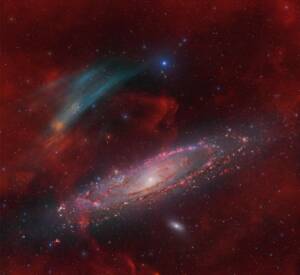
Discovery of the M31 [OIII] emission arc
Recently, a major discovery by an international team of amateur astronomers and scientists has become a huge online hit, and this new discovery is just located in one of the
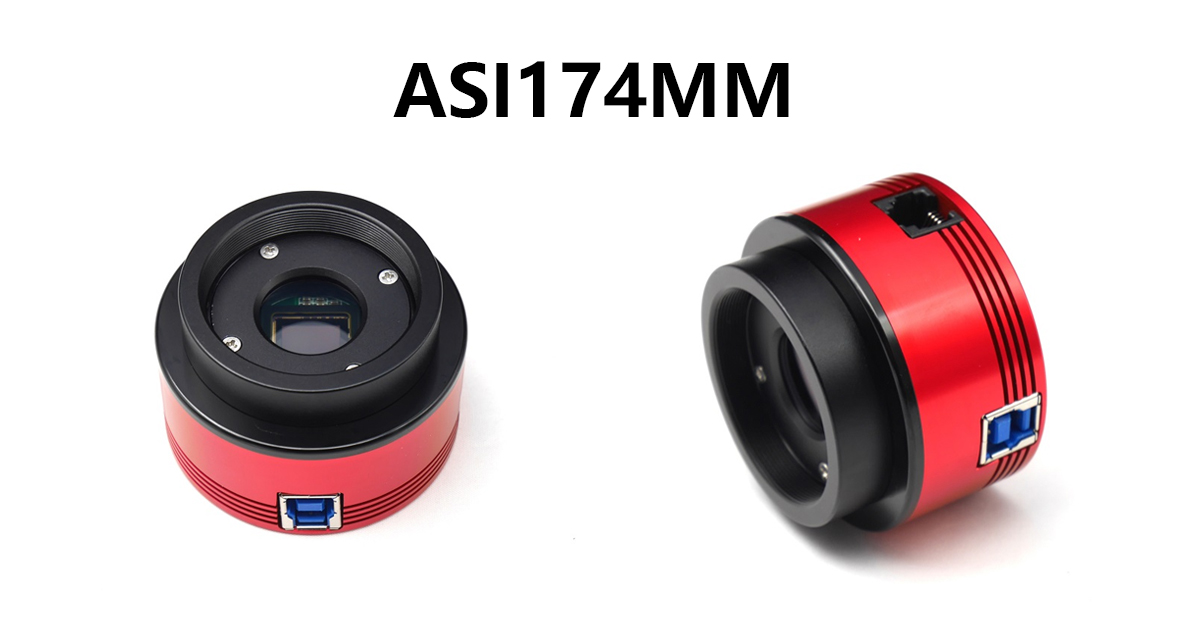
The ASI174MM is an excellent choice for planetary imaging and follows in the footsteps of our legendary planet camera, the ASI120. From its inception to the present day, it remains a highly respected and sought after professional-grade planetary imaging camera.

1. Larger sensor size – The ASI174MM uses the Sony Exmore IMX174 2.35MP sensor and has a capture area that is 4.6 times the size of its ASI120 predecessor. This increased sensor size vastly improves performance when planetary imaging.
2. High frame rate: The ASI174MM can run to 164 frames per second in high-speed mode, allowing faster frame capture in shorter time frames.
3. The Sony IMX174’s global shutter function provides improved image quality by making sure images of moving objects avoid focal plane distortion. This is especially helpful when performing solar or lunar imaging. Bad seeing, wind, or movement can alter the image if the readout speed is not quick enough (< 30fps).
4. This sensor features 5.86µm pixel size in a 1936 x 1216 array, perfect for taking high quality solar, lunar, planetary, and deep-sky object images. Large pixels plus high quantum efficiency (77% QE) means increased sensitivity and improved image capture capability.
5. 1080P HD: The 1936×1216 resolution is ideal for capturing 1,080p HD video for display on PC or mobile devices such as phones and tablets.
When the ASI174MM was launched, it was aimed at lunar and planetary photography but through extensive use by solar imagers this has shown the ASI174MM to be a highly capable solar imager and as a result it has grown to be a popular camera choice when solar imaging.
As the name suggests, solar photography is capturing images of the sun’s surface. Solar photography is subdivided into two categories, one is known as White Light Photography, while the other is called Narrow Band Imaging.
White light photography uses the entire visible light spectrum, in which the main details of the sun are visible such as sunspots, flares and more subtle filaments.
Narrow-band photography, on the other hand, is a little more complex, requiring the use of specialized solar filters and telescopes to capture details in the Hydrogen Alpha and Calcium K spectrum.
The ASI174MM is an excellent choice for both white light or narrowband imaging.
White Light Photography
For most people they may simply use an astronomical telescope with a filter that will allow them to take pictures of the sun. This is popular as it doesn’t require a dedicated solar telescope.
A solar film filter or Herschel wedge prism is needed to reduce the light from the sun, and this will allow sunspot and surface features to be seen.
Narrowband Photography from Nikko
With its high-tech filter components, the specialized solar telescope creates a magical experience, and the sun’s finer details are more easily observed than in white light.
The ASI174MM is ideal for imaging and photography of the suns surface. At NEAF 2019, our good friend TJ Connolly demonstrated his solar telescopes and ASI174MM allowing visitors to experience the sun firsthand through his equipment.
Nikko’s use of his solar telescopes and ASI174MM demonstrates the ever-changing surface of our star. Using a 300mm-500mm short focal length telescope and ASI174MM he completes a continuous recording of the full-days animation of the suns movements, creating a striking and dynamic solar experience, this is even more impressive during a solar eclipse.
Photographer: TJ Connolly
Or use a larger diameter and longer focal length of the telescope and create high-resolution photography in sub-regions. Mosaics are then stitched together in photoshop.
Photographer:TJ Connolly
Lunt LS152, ZWO ASI 174mm – 6 panel mosaic
Or high-resolution close ups observing solar flares.
You can also capture images from an area of the sun’s surface for several hours in a row and make wonderful sun-moon animations.
ASI174MM’s large sensor size, global shutter, high sensitivity, high frame rate and other characteristics offer the lunar, planetary and solar imager a high quality camera with exceptional performance. The ASI174MM is another breakthrough innovation from ZWO and builds on the legacy of our legendary ASI120MM.
With the ASI174MM you really can experience views from other worlds from right here on earth.

Recently, a major discovery by an international team of amateur astronomers and scientists has become a huge online hit, and this new discovery is just located in one of the
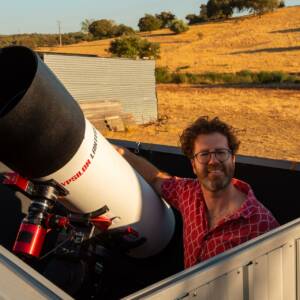
By day, David Cruz works as a digital designer. By night, he designs something far greater — images of the universe itself. “Since I was young, I was always interested

bbrown_admin, October 30, 2025 INITIAL IMPRESSIONS: The ZWO ASI585MC Air came well packaged from the manufacturer. The box is improved and has an impressive feel with a magnetic closure on
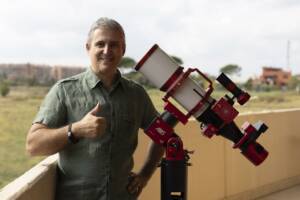
– Q3 ASIWEEK Winner Gianni Lacroce’s Astrophotography Journey Hi, I’m Gianni Lacroce, an Italian astrophotographer. My passion for the night sky began long before I owned a telescope or a
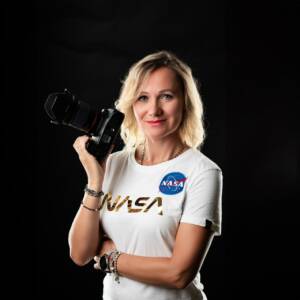
INTRODUCTION My name is Marzena Rogozińska. I live in Bytom (Poland) and work as a psychologist and pedagogue at two schools. I would like to thank you for honoring my

Two years after winning #44/2023, Robert Eder, a sound engineer from Vienna, Austria, has once again claimed victory with #27/2025 ASIWEEK, returning to share his astrophotography journey. Combining technical skill
4 Comments
roman
Do you have Cooled version of 174mm?
Roman
Katherine Tsai
No, we do not have.
Bill
Is this camera suitable for Solar HA? I have the 178mm Cool and I love the very high resolution but I cannot use it for HA Solar as I get horizontal banding or other checkered patterns on the image and the stacked final images don’t look good.
ZWO.Moson
You can use our narrowband filter with this camera, there is the link for your reference: https://astronomy-imaging-camera.com/product/zwo-new-narrowband-1-25-filter